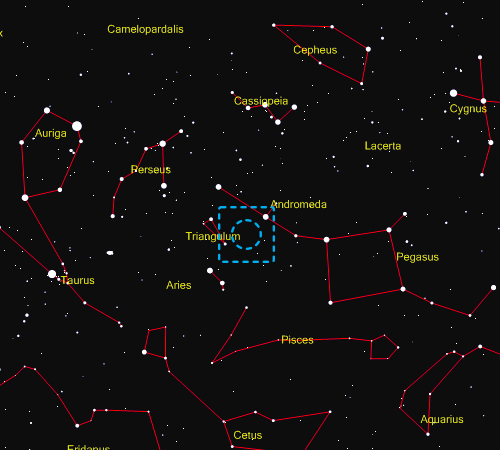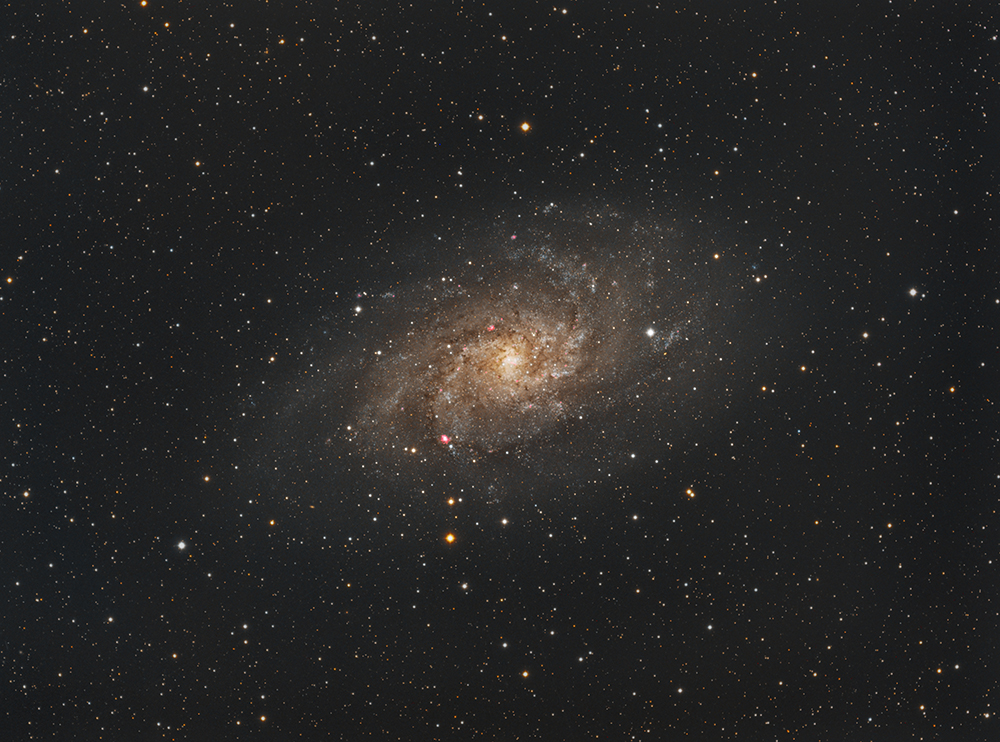NAME:
CATALOGUE:
OBJECT TYPE:
CONSTELLATION:
DISTANCE:
APPARENT MAGNITUDE:
APPARENT SIZE:
DIAMETER:
DISCOVERY:
BEST VIEWED IN:
RIGHT ASCENSION:
DECLINATION:
TELESCOPE:
DATA GATHERED:
EXPOSURES:
TOTAL TIME: |
|
The Triangulum Galaxy
M33 / NGC 598
Spiral Galaxy
Triangulum
2.7 million light years
5.7
70 x 40 arcminutes
55,000 light years
1654, Giovanni Hodierna
October
01h 33m 57s
+30º 40’ 40”
Skywatcher 80ED & 0.85x Reducer
7 nights, December 2014
L = 26 x 1200s
RGB = 12 x 300s each
Hα = 5 x 1800s
14 hours 10 minutes |


